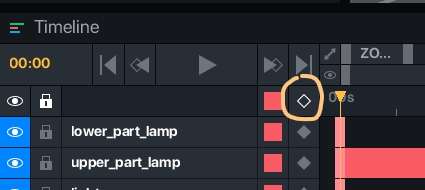Animation
Important Notes About Animation
Animations are one of the most important features of the asset. They turn an object into an entity with complex behaviours in the game; it's not just animals and creatures that need an animation, but also artifacts, vehicles and other inorganic objects.
RIG FIRST
Rig your asset and create many poses of it as static animations to finalise the structure before adding motion keyframes.
Thoroughly planning how the parts of your entity need to be movable for all of its animation poses will avoid many corrections later.
See Build a Rig to learn about creating a rig in the Skeleton Panel.
Animation Tips
The front of the asset must correspond to the orientation of the positive Z-axis.
The pivot point must be at the base of the model and centred.
Simple entities can’t have more than 2.500 sides.
Complex entities cannot have more than 5.000 sides.
Adhere to The Sandbox Scale of 32 voxels per meter to ensure your creations are practical for use with other assets. Off-scale assets (e.g., for a tiny world Experience), should be minimal.
Mesh colliders must be as tight as possible, and overflowing of the mesh must be avoided.
Animations must be assigned correct names to be compatible with game engine behaviours.
All nodes must have keyframes marking the beginning and the end of each animation.
Do not apply movement of the asset itself, only how it will appear when game logic moves the object (avoid root motion).
Animation Names & Behaviours
The Sandbox Game includes many ready-made behaviours to bring assets to life in Experiences, making it easy for Experience creators to build with no code.
In order to trigger an asset's animations when the game engine executes one of these behaviours, the animation names must match the behaviour names the game engine expects.
Using the correct animation names, you can create an animated entity from scratch that will work perfectly with the game engine's behaviours.
Explore VoxEdit templates to find more animation names that align with the game engine's many behaviours.
Below are example animation names that are suited to living creatures, such as animals, humans, and monsters.
Basic Behavior: Idle 01, Walk 01, Run 01, Fall 01, Interact 01, Eat01, Get Hit 01, Attack 01, Death 01.
Advanced Movement: Jump 01, Land 01, Sit 01, Sit Idle 01, Stand Up 01, Ride Idle 01, Crouch Idle 01, Crouch Walk 01, Load Idle 01, Load Walk 01, Load Run 01.
Melee Combat: Attack 02, Attack 03, Block 01, Block Hit 01, Roll 01.
Ranged Combat: Reload 01, Shoot 01, Shoot 02, Throw 01.
Socials: Salute 01, Taunt 01, Dance 01, Talk 01.
Final Keyframes
Due to technical reasons, all of an asset's animations need a keyframe in the last frame for every one of its nodes. You can add them by moving the playhead to the final frame and then pressing the diamond button at the top of the list of nodes in the Timeline Panel.

Static Animations
Some assets may have different static animations (also known as states), these need to have 2 frames for the game maker to detect them.
Following the above 'Final Keyframe' requirement, all the nodes will need a keyframe on the final frame as well.
If it only has 1 frame it won’t be recognized as an animation by the Game maker.
Rotations
Rotations are needed for animating things such as wheels and propellers.
Symmetry Makes Rotation Easier
Most of the time, the module to be rotated is symmetrical. It is therefore not necessary to add extra keyframes and make a complete rotation. A half or quarter turn is enough.

Last updated
Was this helpful?

